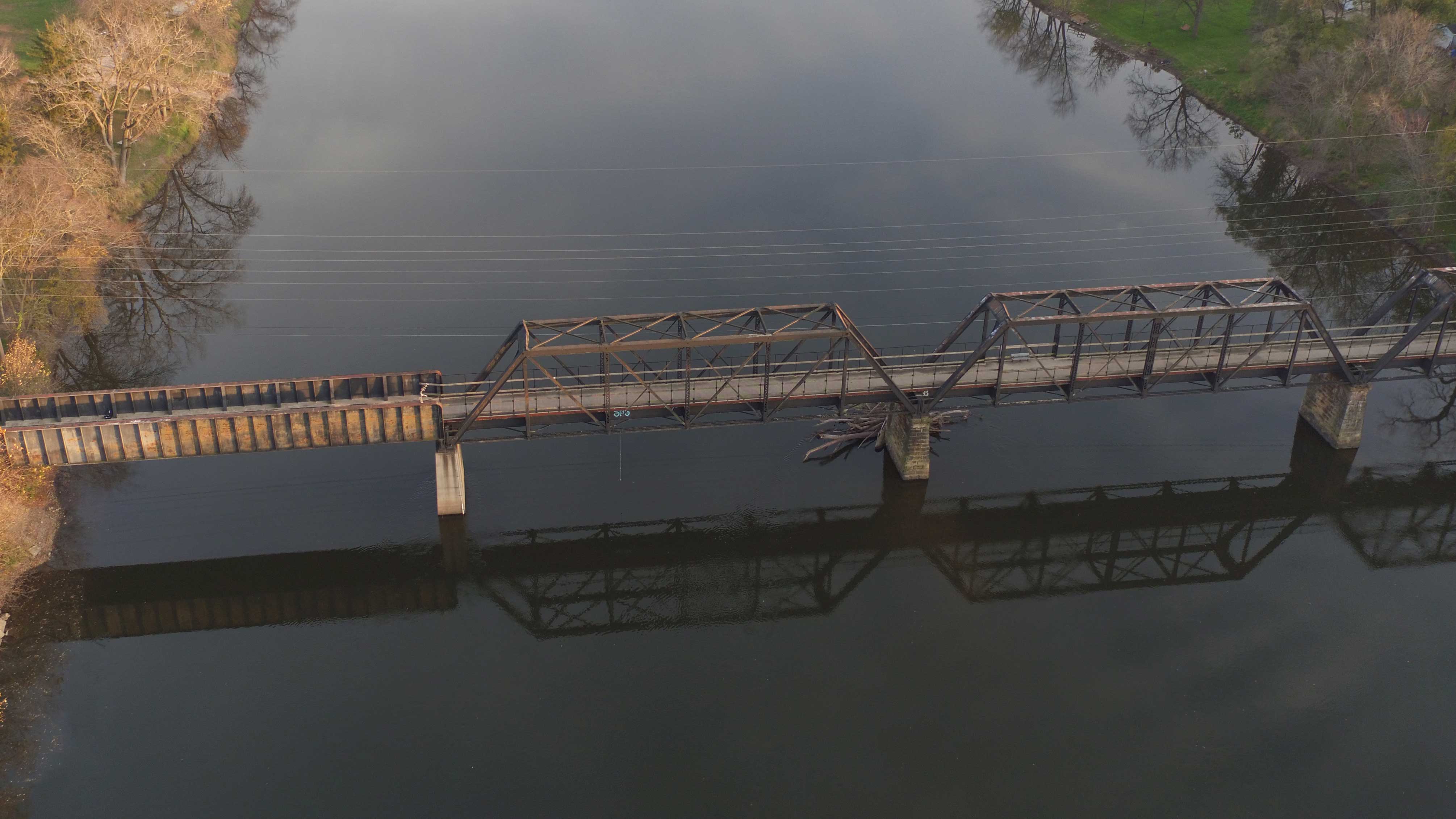| Story by Cindy Cain |
8/8/2017
Bridges of all shapes and sizes are sprinkled throughout the Forest Preserve District of Will County. Some cross streams; others traverse ravines. They’re all part of the District’s quest to reconnect people with nature. But a trio of trestles is noteworthy because of the history, location and design of each bridge.
The Centennial Trail Bridge at Schneider’s Passage in Romeoville, the Wauponsee Glacial Trail Bridge over the Kankakee River in Custer Park and the Plum Creek Greenway Trail Bridge in Crete Township provide passage for thousands of preserve visitors each year.
From Swing Bridge to Trail Conduit: The Centennial Trail Bridge
The swing bridge along the Centennial Trail was constructed in 1899 by Elgin Iron Works and erected by Strobel Steel Construction Company, according to a report from the Historic American Engineering Record (HAER) at the Library of Congress. For more than 90 years, the bridge – then known as the Romeo Road Bridge – carried traffic over the Chicago Sanitary and Ship Canal.
The canal, built from 1892 to 1901, reversed the flow of the Chicago River, and it brought Lake Michigan water and “stagnant sewage” 28 miles from the Chicago River at Damen Avenue to the Des Plaines River in Lockport, the HAER report explained.
The bridge was the first to be built of 15 original bridges that spanned the canal, and it is the only example of this type of bridge left in Illinois. When it was operational, the bridge featured a bridge tender’s house perched high atop a steel platform.

)
)
)
)
)
)
.jpg?width=3341&height=1938&ext=.jpg))
)